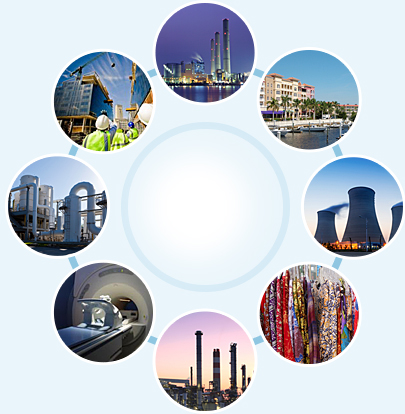1. Moving Bed Bio Reactor(MBBR)
Azure water Technologie’s Moving Bed Bio-Reactor (MBBR) technology is based on the bio-film principle with an active bio-film growing on small specially designed plastic carriers that are kept suspended in the reactor. It is one of the advanced biological treatment processes which have a great potential for the simultaneous and efficient removal of nutrients along with organic matter.
It is a process coupling suspended activated sludge and attached growth process in a single system. The technology utilizes the advantages of both activated sludge and other bio-film systems (e.g. bio-filters, bio-rotors etc.) without being controlled by their disadvantages. The carriers are designed in such a way that it provides a large protected surface area for the bio-film and optimal conditions for the bacteria culture while suspended in the water.
It is also known as Fluidized Bed Bio Reactor. In fluidized bed bioreactors the waste water is fed upward to a bed of 0.4 to 0.5 mm sand or activated carbon. The bed depths are in the range of 3 to 4 m with the specific surface area of about 100 m2/m3 of the reactor volume. Up flow velocity is 30 to 36 m/h. The hydraulic retention time in the FBBR is ranging from 5 to 20 min. For aerobic applications re-circulated effluent is passed through an oxidation tank to pre dissolve oxygen. Adding air to the FBBR would discharge packing to the effluent. For waste water treatment, FBBRs have been used mainly for the post de-nitrification. Aerobic FBBRs are frequently used to treat groundwater contaminated with hazardous substances.









